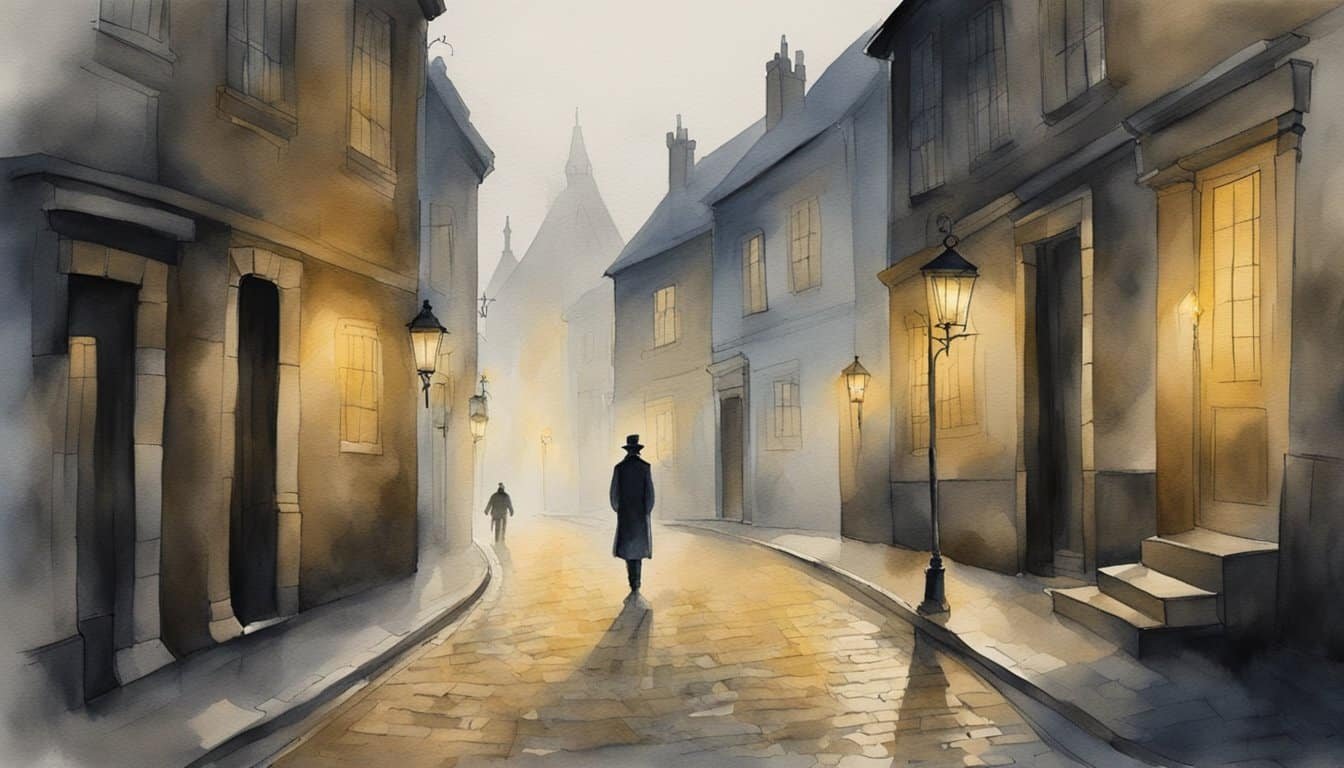Investigating Jack the Ripper

The quest to unveil the identity of Jack the Ripper casts a long shadow over the history of true crime. The chilling saga entwines critical evidence with an array of primary suspects, each more intriguing than the last.
The Infamous Whitechapel Murders
In the fall of 1888, London’s East End was terrorized by a series of gruesome murders. The spotlight fell on the Whitechapel district, where a mysterious figure named Jack the Ripper preyed on vulnerable individuals, largely women. These killings, known as the Whitechapel Murders, involved five victims canonically recognized as the “Canonical Five,” all believed to be the work of this elusive serial killer.
Critical Evidence and Key Locations
Despite several thorough investigations by the Metropolitan Police, crucial evidence was scarce. Notable crime scenes like Mitre Square and the notorious Ten Bells pub provided scant forensic clues. A significant breakthrough seemed possible with the discovery of a bloodstained shawl at the Catherine Eddowes crime scene, but even with modern DNA analysis, the evidence has been contentious and hasn’t conclusively identified the murderer.
Primary Suspects and Theories
Scotland Yard and lead detective Frederick Abberline considered various suspects, from slaughterhouse workers to rogue surgeons. The suspect pool widened further as contemporary historians and amateur sleuths tossed new theories into the ring. While suspects ranged from the plausible to the preposterous, none have led to a definitive answer, maintaining the Ripper’s status as an enduring figure in cold case mythology.
Victims and Society’s Response
Jack the Ripper’s heinous crimes not only struck terror into the hearts of Londoners but also illuminated the grim reality of life in Whitechapel during the Victorian era. The public was both fascinated and horrified, mirroring the duality of the Ripper’s identity as an unknown specter casting a long shadow over society.
Profiles of the Canonical Five
The unfortunate victims, known as the Canonical Five, shared tragic lives of hardship which ended in brutal murders. Mary Ann Nichols, Annie Chapman, Elizabeth Stride, Catherine Eddowes, and Mary Jane Kelly were working girls, often forced into prostitution to survive the squalor and poverty of Whitechapel. Their profiles tell a story of marginalized lives, making their fates all the more poignant.
Impact on Whitechapel Society
Following the murders, fear permeated through Whitechapel’s already rough streets, highlighting issues like violence against women and dire social conditions. The Ripper’s evasion of the law displayed to many the ineffectiveness of the police during that era. This societal impact went beyond immediate fear, leading to lasting mistrust and an increased demand for social reform.
Media Representation and Public Reaction
The grisly details and elusive nature of the killer fed a media frenzy. Papers like The Telegraph engaged in speculative and often sensational reporting, which only exacerbated public alarm and misinformation. This period saw a confluence of morbid curiosity and sympathy for the victims while society grappled with a narrative that conflated entertainment with empathy.
Jack the Ripper’s identity remains shrouded in mystery, a reminder of humanity’s darker capabilities and the wounds it leaves on society.
Cultural and Historical Significance

Jack the Ripper is a figure that transcends the crime itself, impacting culture, history, and modern investigations. The true identity of Jack the Ripper remains one of the most enduring mysteries of modern times, spawning countless theories and gripping the public imagination well over a century later.
Jack the Ripper in Literature and Film
The enigmatic killer known as Jack the Ripper has been a prolific character in literature and film, often portrayed as a shadowy figure lurking in the gas-lit streets of Victorian London. Books and movies have fictionalized the Ripper’s gruesome crimes against prostitutes, adding to the mythos surrounding his identity. Far from merely historical retellings, these portrayals have explored themes of identity, Victorian society, and the macabre fascination with the dark side of human nature.
Enduring Mystery and Modern Investigations
Over time, the lack of resolution to the Ripper’s identity has kept both amateur and professional sleuths hooked, with new theories regularly surfacing. Modern investigative methods, including forensic science and cold case technologies, continue to be applied to the Jack the Ripper case. Former detective Trevor Marriott is known for his reinvestigations into the cold case, challenging antiquated beliefs and uncovering potential misleads in the historical record, such as the infamous “From Hell” letter which involves a human kidney. Despite advances in science and the dogged pursuit of truth, the real identity of the Ripper, whether he was a barber, a butcher, an epileptic, or an alcoholic with potential brain damage, remains shrouded in mystery.

